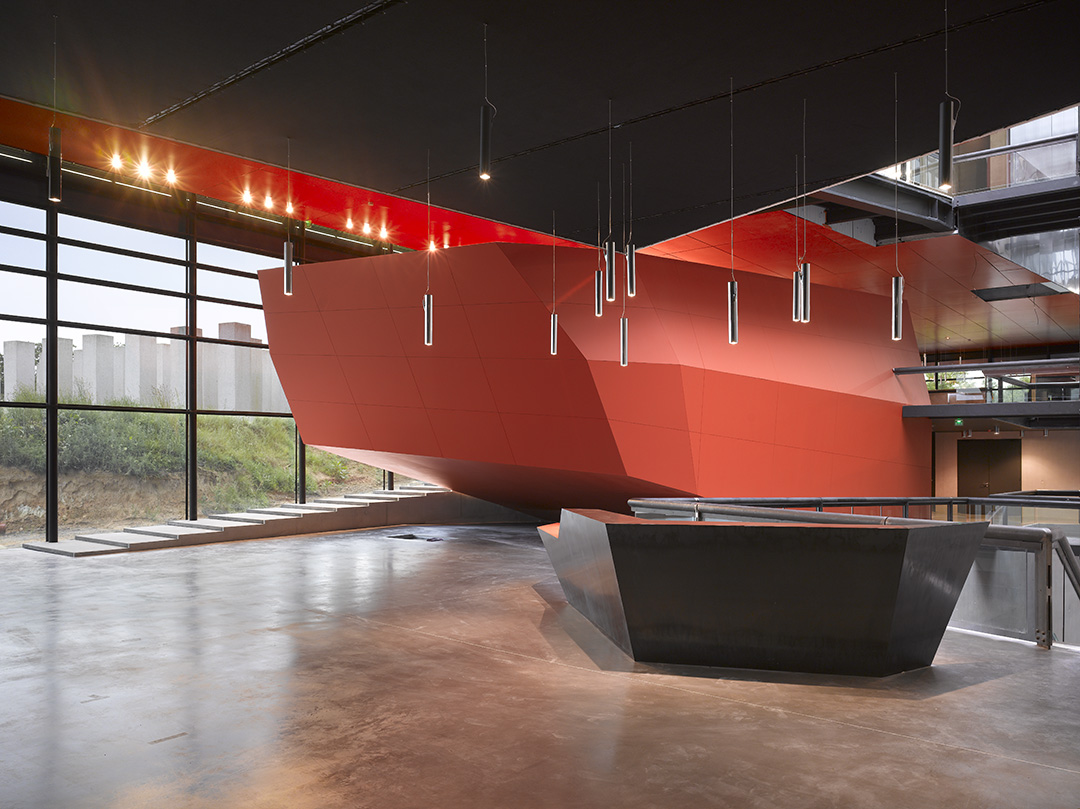E04Suspension
designed by Habits Studio
Aluminium suspensions in two diameters and different lengths. The power cable enters the side of the cylinder, providing two-way emission without casting a shadow on the ceiling. The light source in a recessed position, preventing glare and improving visual comfort.
E04270
E04 Ø 7 – direct light

E04270
E04 Ø 7 – direct light
Main specifications
| Typology | Suspension | ||
|---|---|---|---|
| Application | Indoor | ||
| Material |
|
||
| Finishes |
|
||
| Dimensions (mm) | H 279, D 70 | ||
| Weight (kg) | 0.75 | ||
| Light Source | COB LED module 12 W, LED retrofit GU10, LED module 13 W, 2700K, dim to warm 3000K –> 1800 K, CRI 90, CRI 97 | ||
| Insulation Class | I |
E04280
E04 Ø 7 – direct/indirect light

E04280
E04 Ø 7 – direct/indirect light
Main specifications
| Typology | Suspension | ||
|---|---|---|---|
| Application | Indoor | ||
| Material |
|
||
| Finishes |
|
||
| Dimensions (mm) | H 465, D 70 | ||
| Weight (kg) | 1.03 | ||
| Light Source | COB LED module 12 W, LED retrofit GU10, LED module 13 W, 2700K, dim to warm 3000K –> 1800 K, CRI 90, CRI 97 | ||
| Insulation Class | _ |
E04290
E04 Ø 13,4 – direct light

E04290
E04 Ø 13,4 – direct light
Main specifications
| Typology | Suspension | ||
|---|---|---|---|
| Application | Indoor | ||
| Material |
|
||
| Finishes |
|
||
| Dimensions (mm) | H 372, D 134 | ||
| Weight (kg) | 2.45 | ||
| Light Source | COB LED module 19 W, LED retrofit GU53, LED module 20 W, 2700K, dim to warm 3000K –> 1800 K, CRI 90, CRI 97 | ||
| Insulation Class | I |
Get inspired

For the lighting of the new FRAC – Fonds Régional d’Art Contemporain in Rennes, highly acclaimed French architect Odile Decq has selected the e04 fixtures from the Luceplan collection, in the ceiling and suspension versions (with LED light sources). The elegant, essential silhouette of the e04 fits perfectly into this work of architecture that features the typical colors of the ‘dame noire’ of contemporary architecture.
The Italian magazine “Interni” has dedicated an in-depth article about this project, designed by Studio Odile Decq
Discover more










